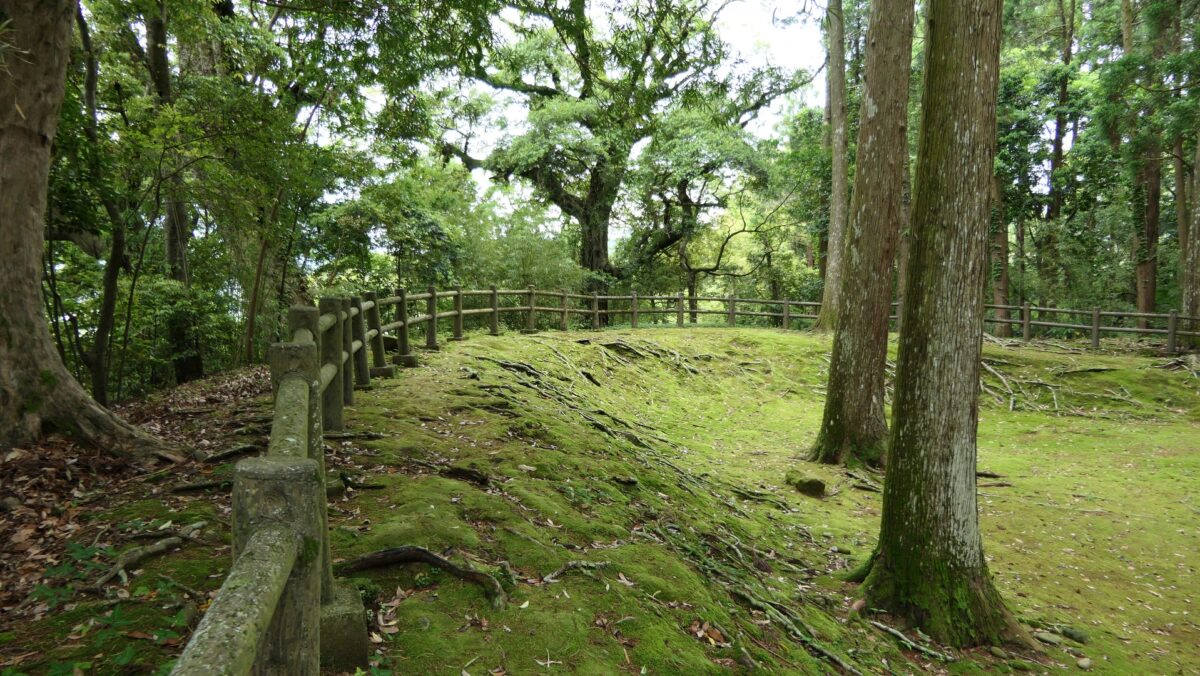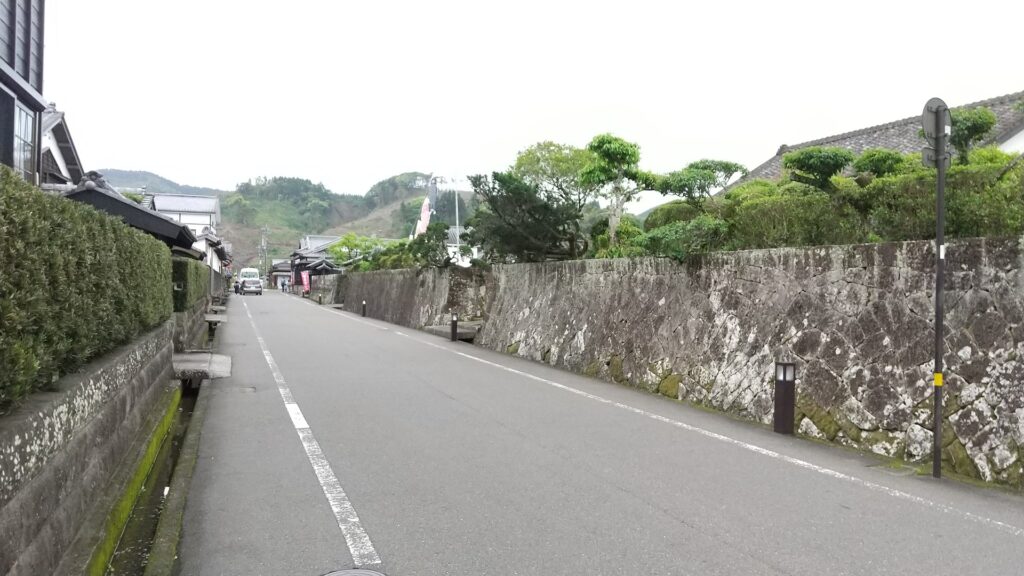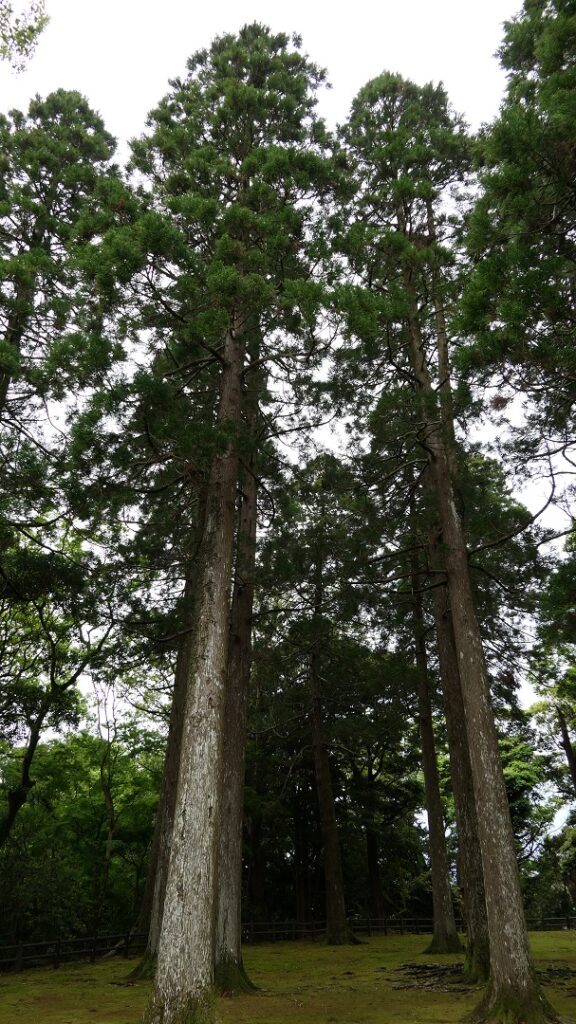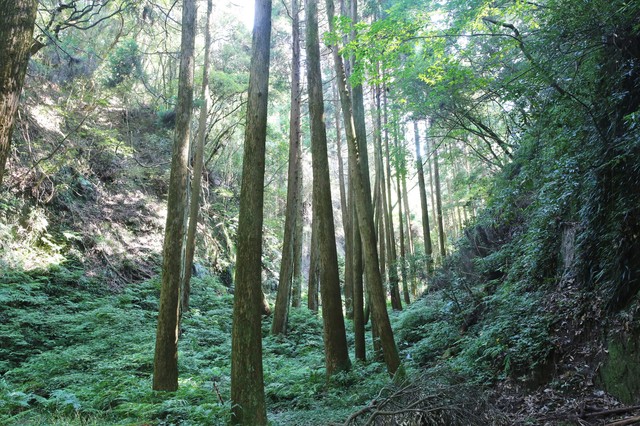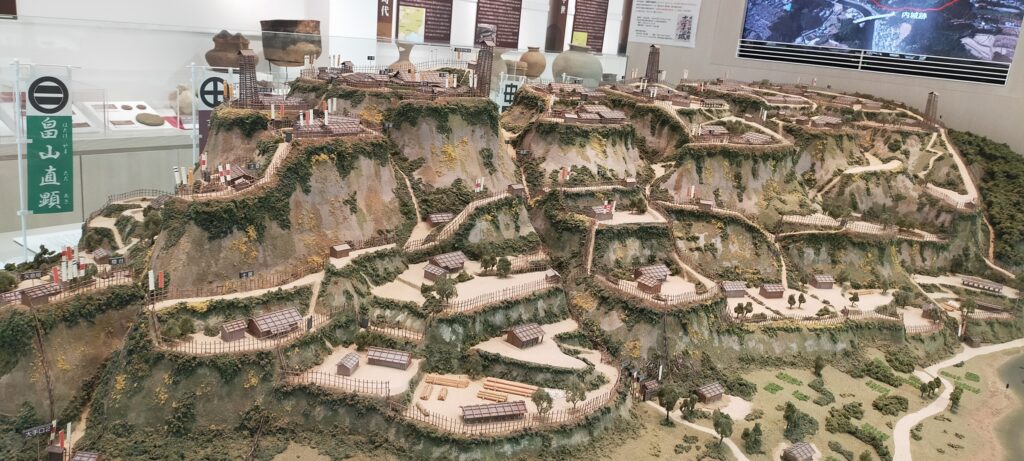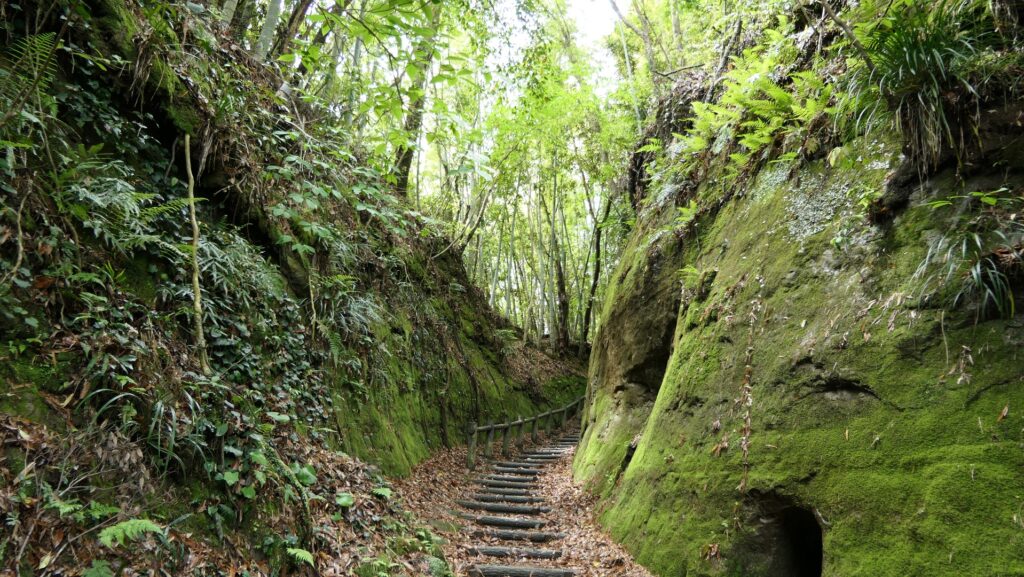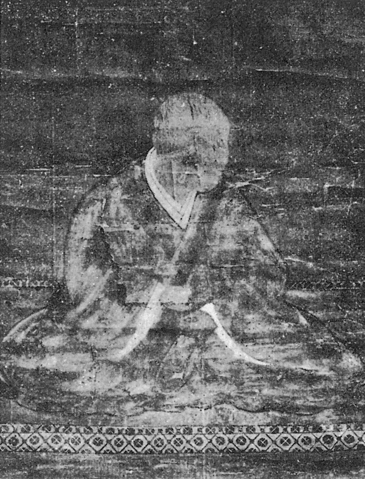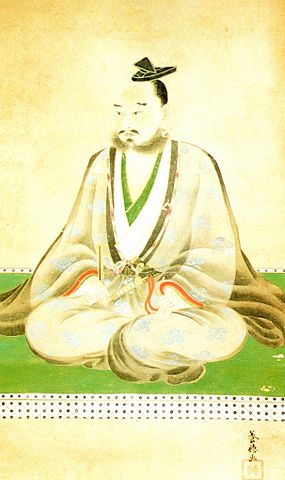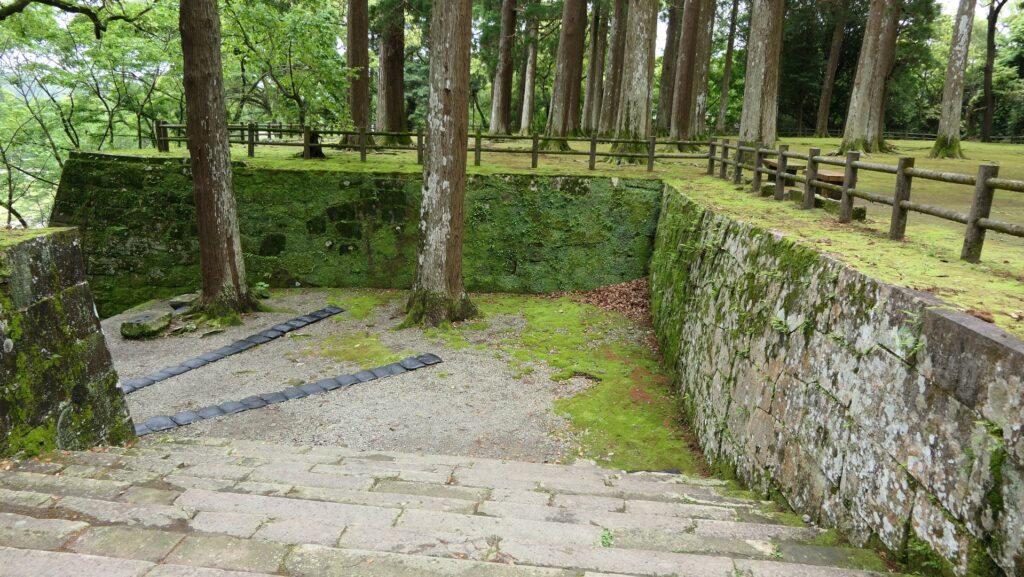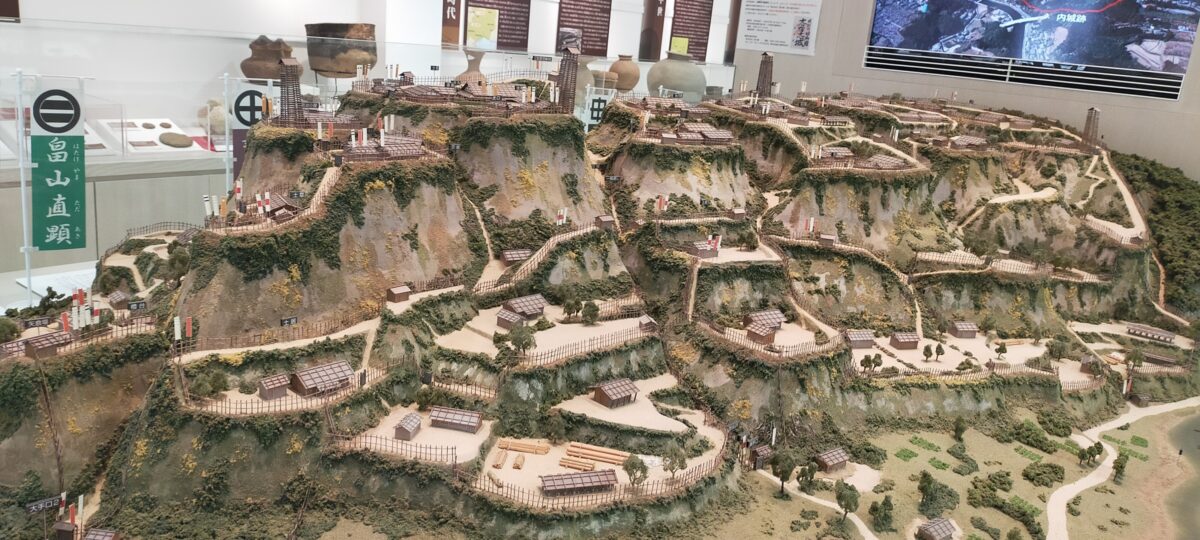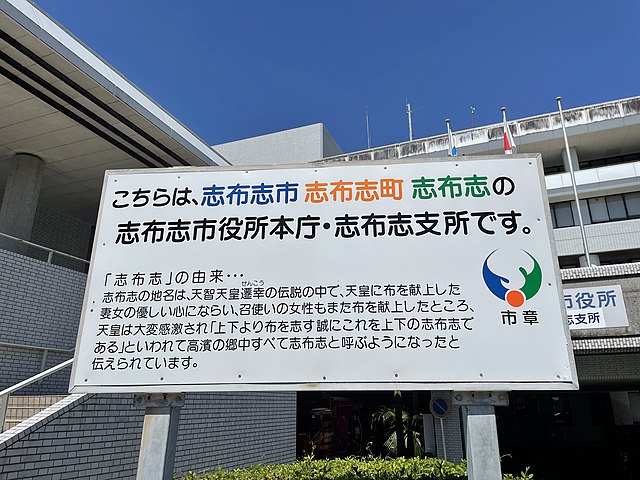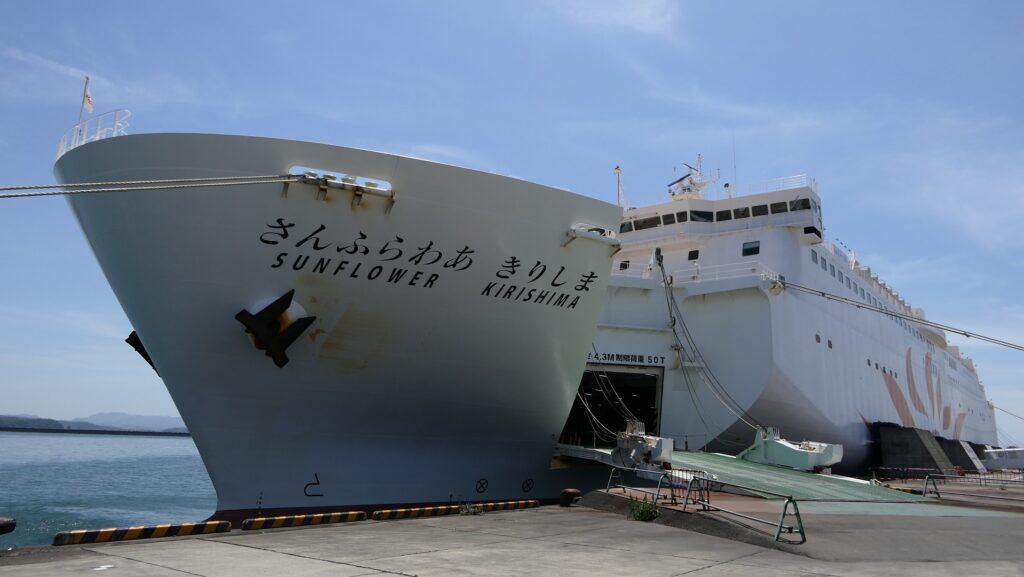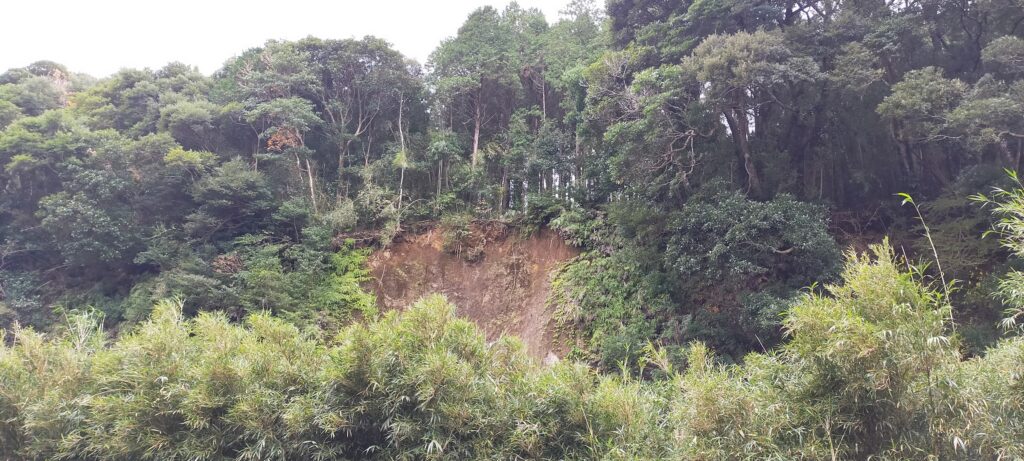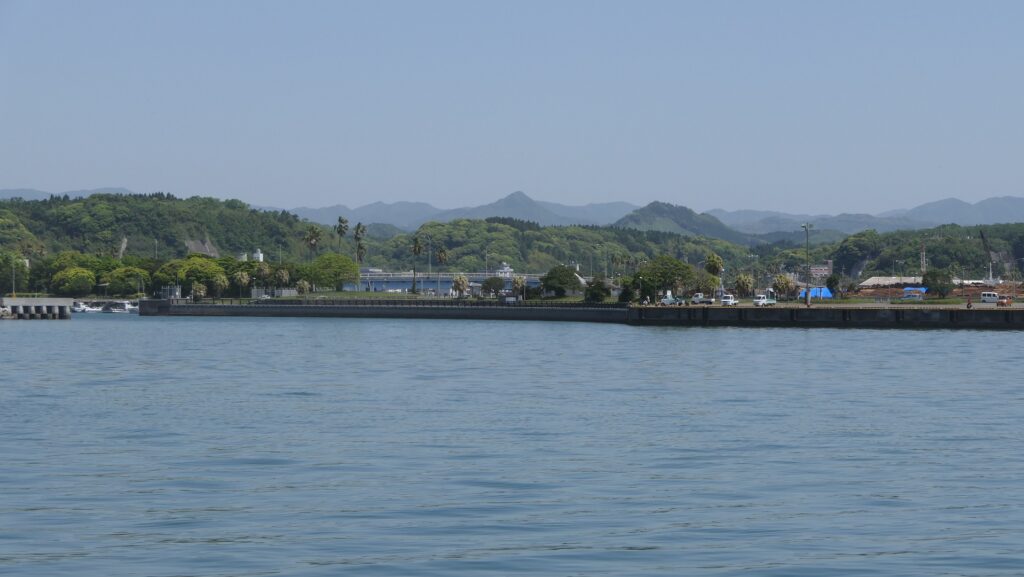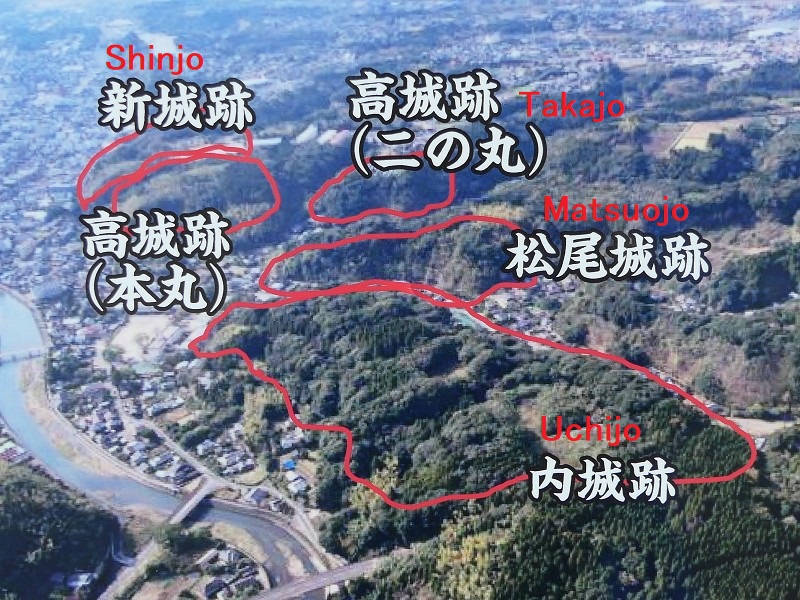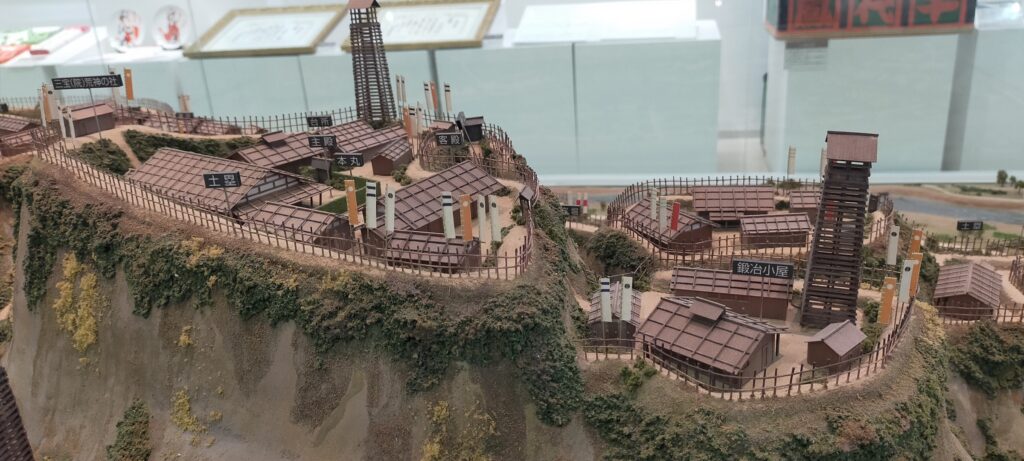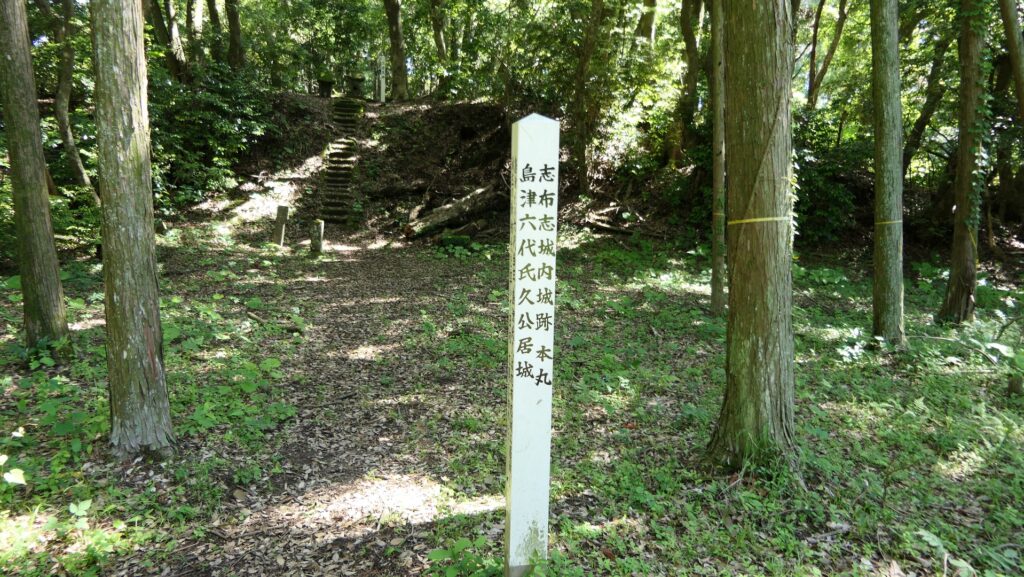Features
Samurai Residence street and Domain school
If you walk around the eastern part of the main portion, there is the Samurai Residence street which still has its original atmosphere with stone walls, white mud walls, hedges and traditional gates. Though many of the residential buildings inside were turned into modern facilities, restaurants or residences, some of them remain as they were, for example, a former senior vassal, Ito’s residence being used as a hotel.
The map around the castlle
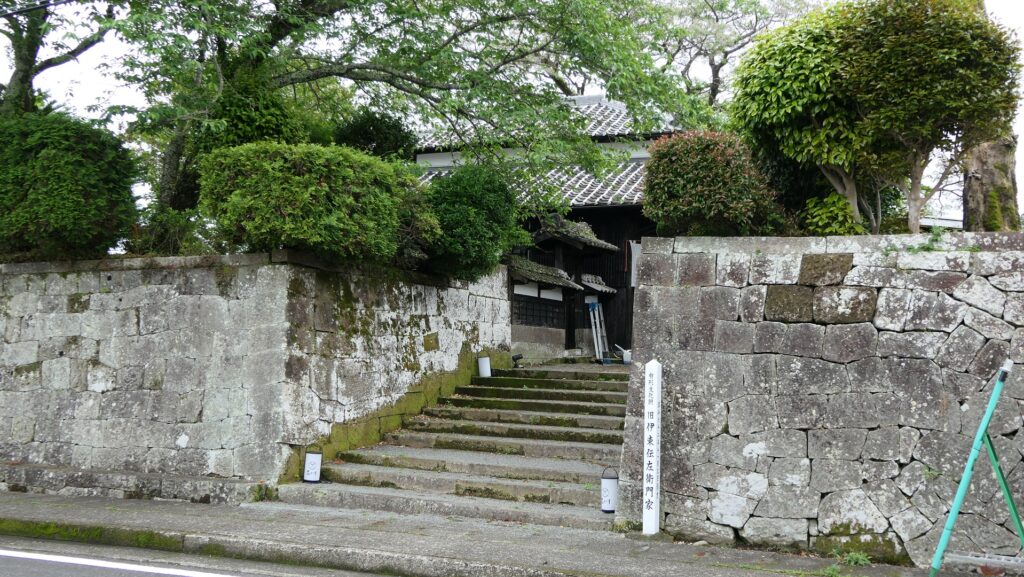
There is also the restored domain school building, called Shintoku Hall, one block north from the street, which provided talented people, including Jutaro Komura who was the plenary power of the Japanese side to sign the Treaty of Portsmouth to end the Russo-Japanese War in 1905. The stone walls around it are original, so when they needed to be re-piled for repairing, all stones should be numbered and re-piled to the original positions exactly as historical items.
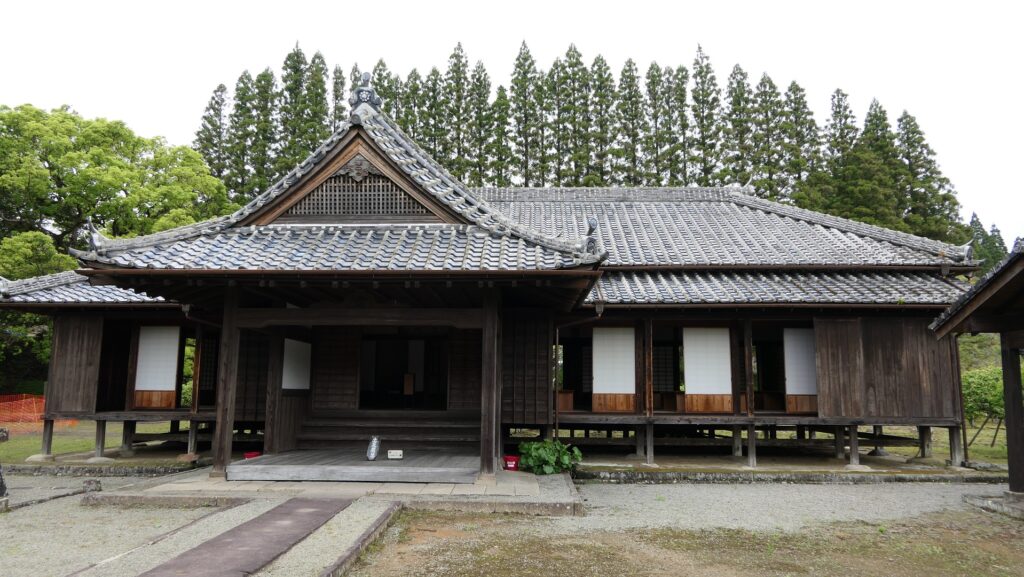


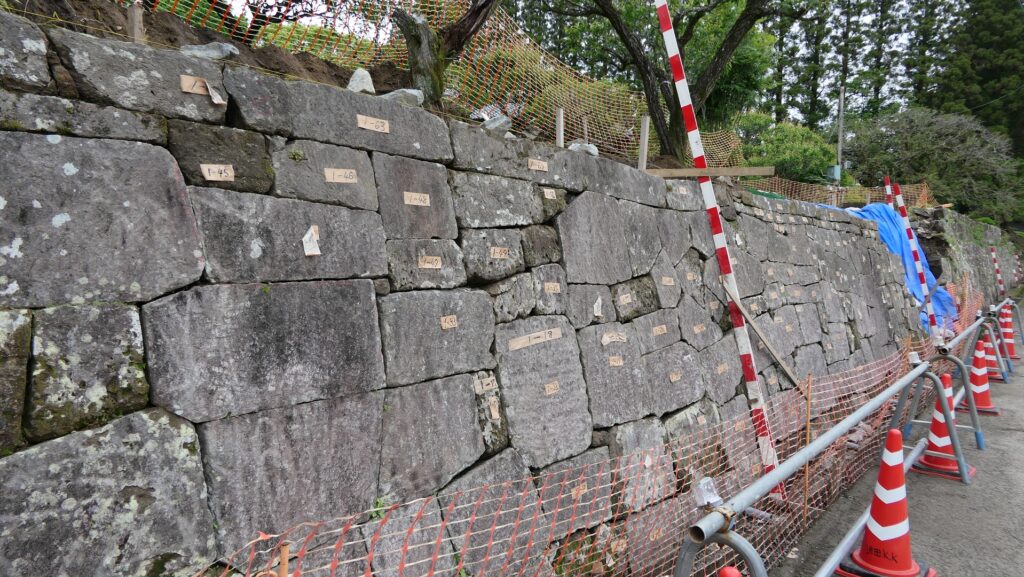
Walking on former Castle Town
Visiting the former castle town below the castle ruins is also recommended, which is surrounded by the winding Sakatanigawa River. The town also has a similar atmosphere to the Samurai Residence street and looks more casual. For example, Ushiromahi or the Back Town street has waterways with varicolored carps swimming. Honmachi-Shonin (or the Main Town Merchant street) has old merchant houses where you can enjoy eating and shopping.
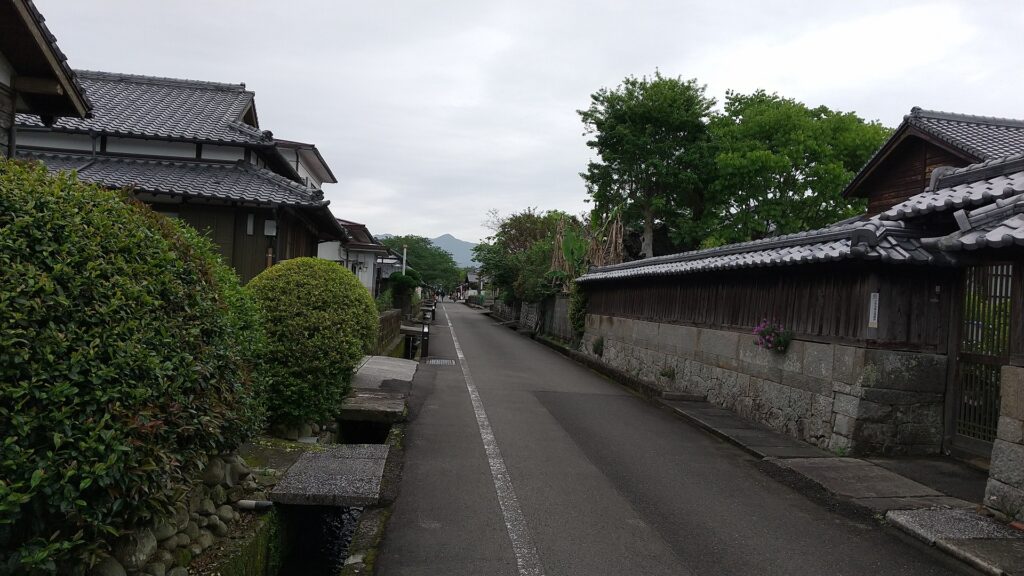

Finally, if you look at the castle ruins from the western side of the town along the river, you can see the castle was built on the edge of high and vertical cliffs which originate from the Shirasu plateau. Part of the cliffs are covered with concrete to avoid them from collapsing. Modern-day people are still struggling to maintain the castle ruins on the cliff, so the Obi Domain by the Ito Clan must have made much greater efforts to do it.
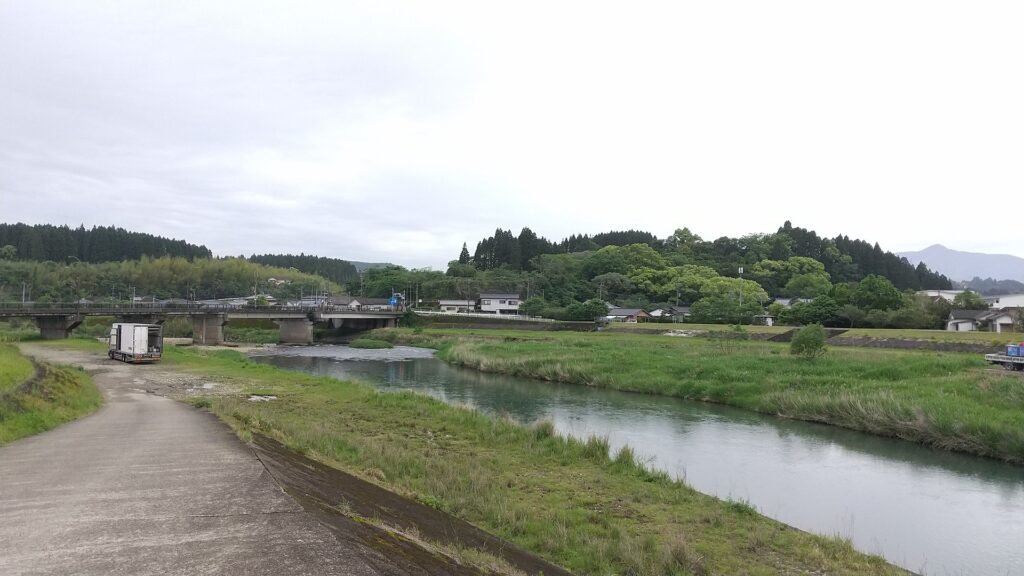
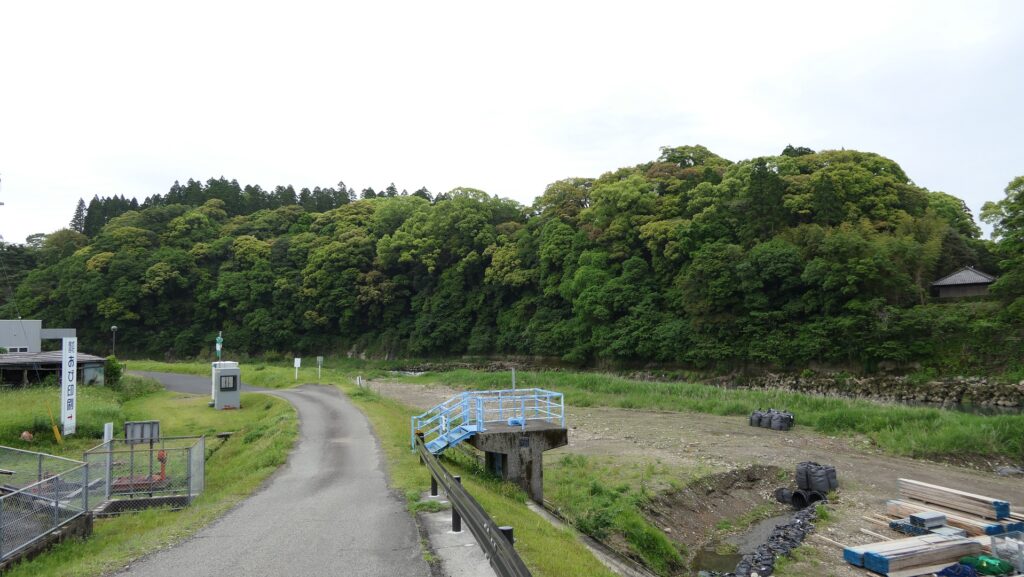
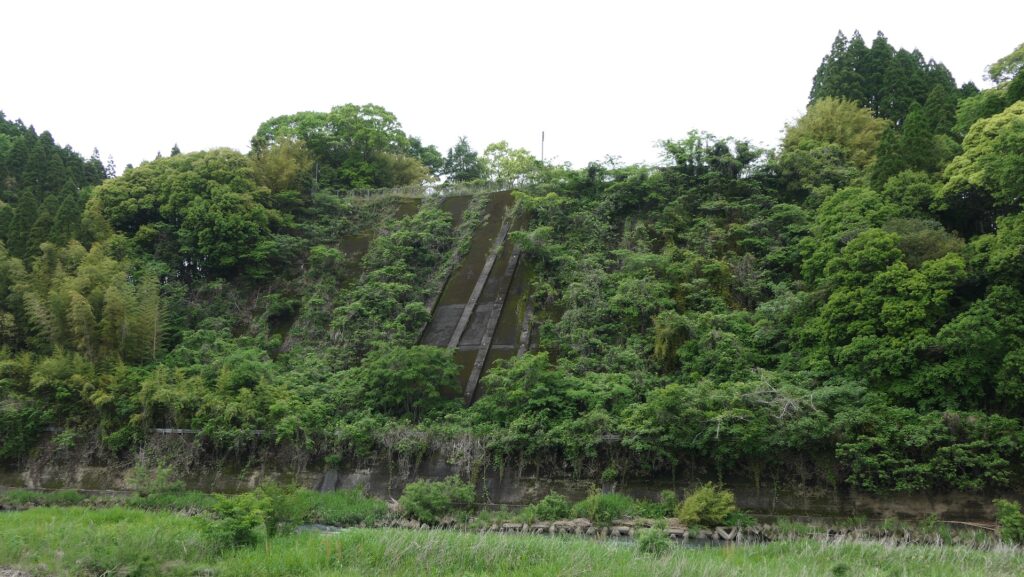
Later History
After the Meiji Restoration, most of the castle buildings were demolished. However, the layout of the castle and town including their street plans continued being used to the present time. Nichinan City launched the restoration project in 1974. After that, the area of castle ruins and town were designated as the first Preservation District for Groups of Historic Buildings in the Kyushu Region in 1977, followed by the restoration of the Main Gate in 1978 and the hall in Matsu-no-maru Enclosure in 1979. That’s why we can enjoy the well-balanced remaining and restored items in this site.
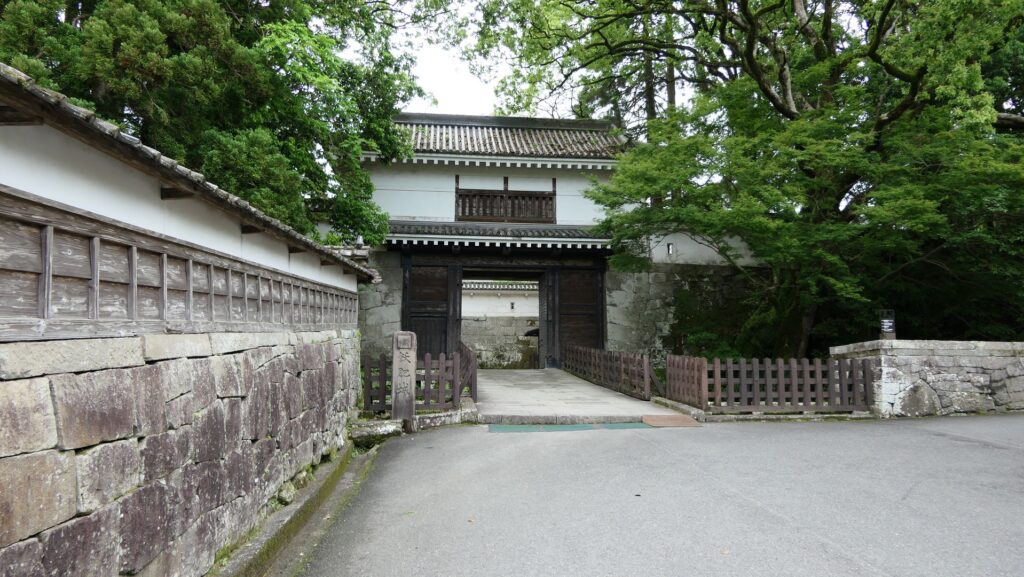

My Impression
I think Obi Castle is the completed castle on the Shirasu plateau. Building castles on the plateau was easy thanks to its nature, while maintaining them could be very difficult. Natural hazards, such as harsh weathers and earthquakes, often caused collapsing of cliffs in these castles. Because of that, other castles of the same type like Sadowara, Shibushi, Chiran were abandoned in the peaceful Edo Period. However, the Ito Clan, the lord of the castle, didn’t have any substitute land. That’s why the clan’s Obi Domain continued to build their castle and town all through the period which we can enjoy to visit right now.
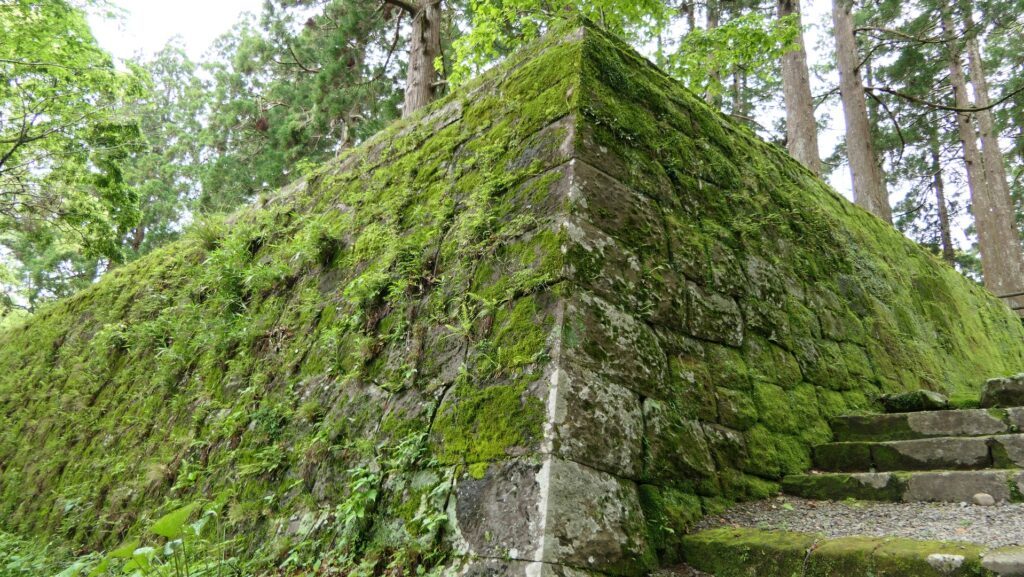

How to get There
If you want to visit the castle ruins by car, it is about a 45 minute drive (through Miyazaki Prefectural Road 28) away from Tano IC on the Miyazaki Expressway. There is a parking lot for visitors in front of the castle ruins.
If you want to use public transportation, it takes about 15 minutes on foot to get there form JR Obi Station.
For visitors from Tokyo or Osaka: It may be a good idea to rent a car at Kagoshima or Miyazaki Airports after using a plane.

That’s all. Thank you.
Back to “Obi Castle Part1”
Back to “Obi Castle Part2”

